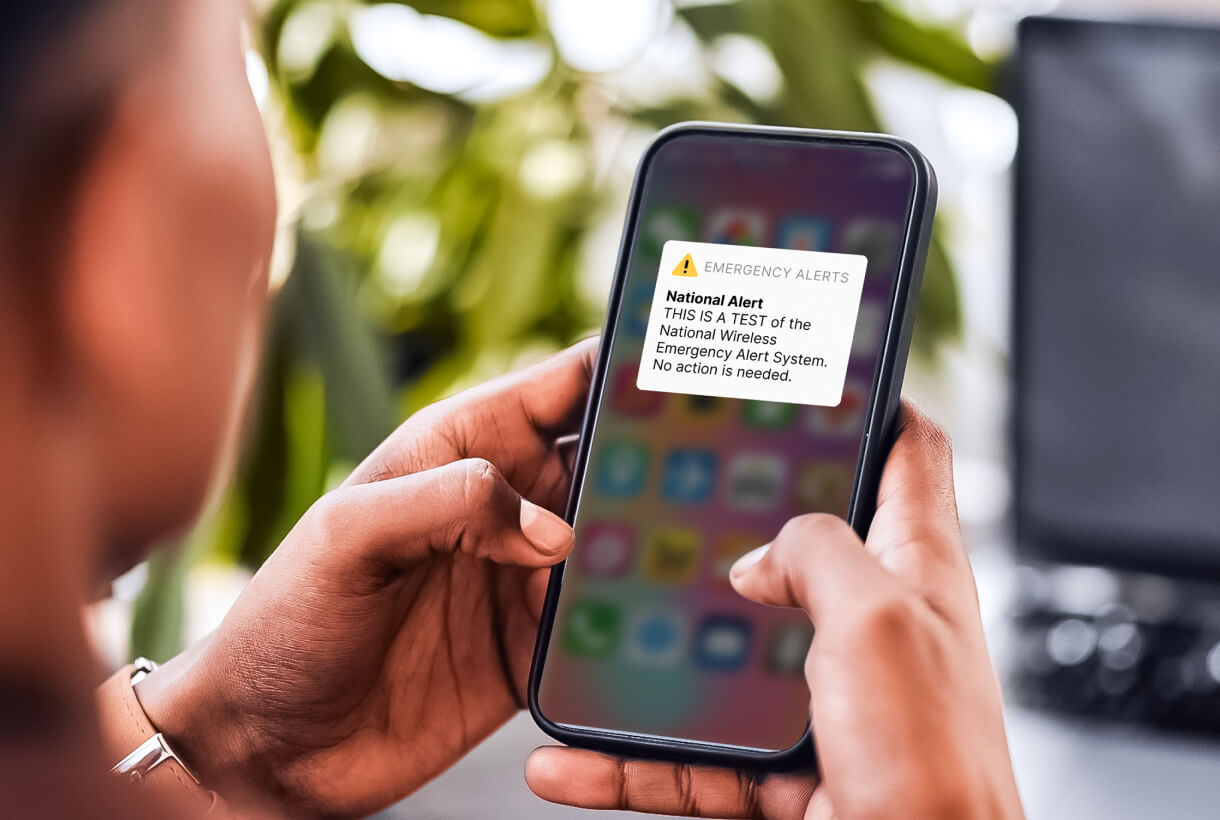While your residents may be in vacation mode during the summer months, state and local government officials need to remain on high alert.
Nearly 82 percent of Americans plan on traveling this summer, according to a summer travel survey by Vacationer. Just over half that number (almost 42 percent) plan on traveling more than once, and 76 percent intend to travel domestically.
That’s good news for local businesses and the economy, but it also increases the burden on local officials responsible for keeping residents and visitors safe. The best way to maintain public safety is with an emergency alerting strategy that’s ready to withstand the summer surge of citizens visiting and passing through your community.
Summer Travel Trends
You can’t predict every threat that may happen in your community this summer, but you can use data to help you make informed decisions around preparation and response.
Here are a few key questions to ask (and answers) about summer travel plans for 2024.
How are Americans traveling this summer?
- The Vacationer survey found that nearly 52 percent of American adults plan to fly on a plane this summer. Nearly 23 percent of this total plans on flying more than once.
- The survey also discovered more than 75 percent of American adults intend to take a summer road trip.
- Major U.S. airline carriers plan to fly more than 26,000 daily flights this summer, a 5.6 percent increase from 2023.
Where are they traveling?
- 70 percent of Americans plan to visit coastal locations this summer. Other popular destinations include:
- City breaks (58 percent)
- National parks and wilderness area retreats (56 percent)
- Mountain escapes (50 percent)
- Rural towns and communities (42 percent)
- Over 50,000 people plan to attend the Republican National Convention (RNC) in Milwaukee, Wisconsin from July 15 – 18.
- More than 5,000 delegates, 12,000 volunteers and approximately 50,000 visitors are expected at the Democratic National Convention (DNC) in Chicago from August 19 – 22.
- 70 percent of Americans plan to visit coastal locations this summer. Other popular destinations include:
When are they traveling?
- Just over 30 percent of American adults plan to travel for the Fourth of July, according to the Vacationer survey. Almost 22 percent plan on traveling for Memorial Day, and nearly 20 percent have Labor Day travel plans.
- United Airlines is predicting a 10 percent increase in travelers around Memorial Day compared to last year, while Delta is expecting a five percent increase.
- Data points to an extension of the summer travel season, with the percentage of post-Labor Day trips increasing to 17 percent in 2024 up from 12 percent in 2022.
In Control: A Guide to Navigating Emergency Alerting With Authority and Precision
Use this first-of-its-kind guide to stop hesitating and use IPAWS to send life-saving alerts with confidence.
Travel Forecast: All Signs Point to Risk
As American citizens take to the road and the air in search of summer adventures and relaxation, state and local agencies need to set their sights on the risks associated with periods of high travel volume.
Emergency managers and other public officials should keep the following threats on their radar.
- Transportation accidents: More people on the road increases the risk of crashes, which can result in road closures, injuries and death. In fact, half of U.S. states have seen an increase in fatal summertime crashes.
- Airline delays and safety issues: An increase in the number of daily flights puts added strain on airports. Hot summer temperatures and other extreme weather patterns contribute to delays. A shortage of air traffic controllers compounds the issue and increases the risk level.
- Extreme heat: This summer is expected to be another scorcher. Excessive temperatures threaten the health and safety of residents and visitors. It can also cause cascading risks like power outages, car breakdowns and flight delays.
- Hurricanes: The start of summer coincides with the kickoff of hurricane season. The National Hurricane Center is predicting an above normal season, impacting the safety of those in a storm’s path.
- Protests: Planned protests are a concern at both the RNC and DNC, making this a high-level threat for residents and attendees.
6 Tips for a Sizzling Emergency Alerting Strategy
Any one or a combination of these threats can happen at any point during summer travel season. Protecting the public requires two things: 1) a reliable mass notification system with advanced features to support targeted emergency alerting; and 2) confidence amongst your team in using the alerting system during an emergency.
The following tips will ensure you have the right technology and the know-how to keep everyone in your community safe and informed – whether they’re a long-time resident or just passing through.
1. Be sure your emergency alerting technology can support you during periods of high travel, including the ability to send:
- Emergency alerts through multiple channels via mobile app
- Location-based alerts to target residents and visitors in specific geographic areas
2. Look for a fully compliant IPAWS solution to expand your reach through all three IPAWS Alerting Pathways.
3. Create a detailed and comprehensive emergency alerting program. It should include an IPAWS user policy that answers the following questions:
- Who has the authority to initiate an alert? Who are the recipients?
- What is the content you want to send? What action do you want your recipients to take?
- When do you use the alerting system (your trigger circumstances)?
- Where will the alert reach (the geo-targeting)?
- How will it go out – do you know the difference between IPAWS delivery methods?
4. Conduct regular training and education for your entire team to ensure they’re confident in their ability to send an emergency alert. Training should cover various scenarios so the person responsible for sending the alert will not waste precious time second-guessing themselves or asking for permission.
5. Create templates for the most likely threats during summer travel season to save time and reduce anxiety during an actual emergency. Messages should be brief and instructive.
6. Never stop learning or practicing. Emergency alerting technology is always evolving. Training needs to stay up to date, and regular practice is the only way to create the muscle memory needed to act swiftly and confidently under high-stress conditions.
Summer Reading: Emergency Alerting Guide
A ton of statistics point to the spike in summer travel and the risks that come along with it. But citizens are not statistics.
It’s up to local emergency managers and other public officials to protect our neighbors, friends and families as they travel across the country the next few months. The risks may seem complex, but the solution is simple – an effective emergency alerting technology and program.
If you’re looking for more tips and practical knowledge on this topic, check out In Control: A Guide to Navigating Emergency Alerting With Authority and Precision. Based on the first-hand experiences of two emergency alerting and crisis response experts, it has everything you need to build your competence and confidence this summer.


